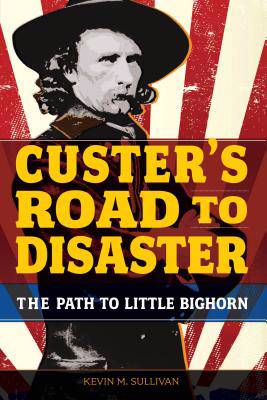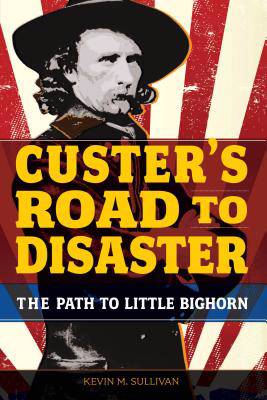
Door een staking bij bpost kan je online bestelling op dit moment iets langer onderweg zijn dan voorzien. Dringend iets nodig? Onze winkels ontvangen jou met open armen!
- Afhalen na 1 uur in een winkel met voorraad
- Gratis thuislevering in België vanaf € 30
- Ruim aanbod met 7 miljoen producten
Door een staking bij bpost kan je online bestelling op dit moment iets langer onderweg zijn dan voorzien. Dringend iets nodig? Onze winkels ontvangen jou met open armen!
- Afhalen na 1 uur in een winkel met voorraad
- Gratis thuislevering in België vanaf € 30
- Ruim aanbod met 7 miljoen producten
Zoeken
€ 18,45
+ 36 punten
Omschrijving
The death of George Armstrong Custer ended the life of one of the most flamboyant, brave, careless, and fascinating characters to ever wear a United States military uniform. His dramatic rise during the Civil War to the brevet rank of brigadier general at twenty-three, and his uncanny ability to stay alive regardless of how recklessly he flung himself at the enemy, gave rise to his image as an almost mythical figure. His life was filled with such good fortune that the term "Custer's Luck" was used to refer to an unusually fortuitous event.
Road to Disaster examines Custer's unusual mental and emotional make-up, which played out in his military career, his relationship with his wife, and in the death he and many of his men found at the end of their march into Montana. A clearer picture of the man appears, providing answers as to why military success followed him to the top of his career, and why the Battle of the Little Bighorn became such a shocking disaster in the summer of 1876.
Road to Disaster examines Custer's unusual mental and emotional make-up, which played out in his military career, his relationship with his wife, and in the death he and many of his men found at the end of their march into Montana. A clearer picture of the man appears, providing answers as to why military success followed him to the top of his career, and why the Battle of the Little Bighorn became such a shocking disaster in the summer of 1876.
Specificaties
Betrokkenen
- Auteur(s):
- Uitgeverij:
Inhoud
- Aantal bladzijden:
- 224
- Taal:
- Engels
Eigenschappen
- Productcode (EAN):
- 9780762784417
- Verschijningsdatum:
- 25/06/2013
- Uitvoering:
- Paperback
- Formaat:
- Trade paperback (VS)
- Afmetingen:
- 152 mm x 226 mm
- Gewicht:
- 340 g

Alleen bij Standaard Boekhandel
+ 36 punten op je klantenkaart van Standaard Boekhandel
Beoordelingen
We publiceren alleen reviews die voldoen aan de voorwaarden voor reviews. Bekijk onze voorwaarden voor reviews.











